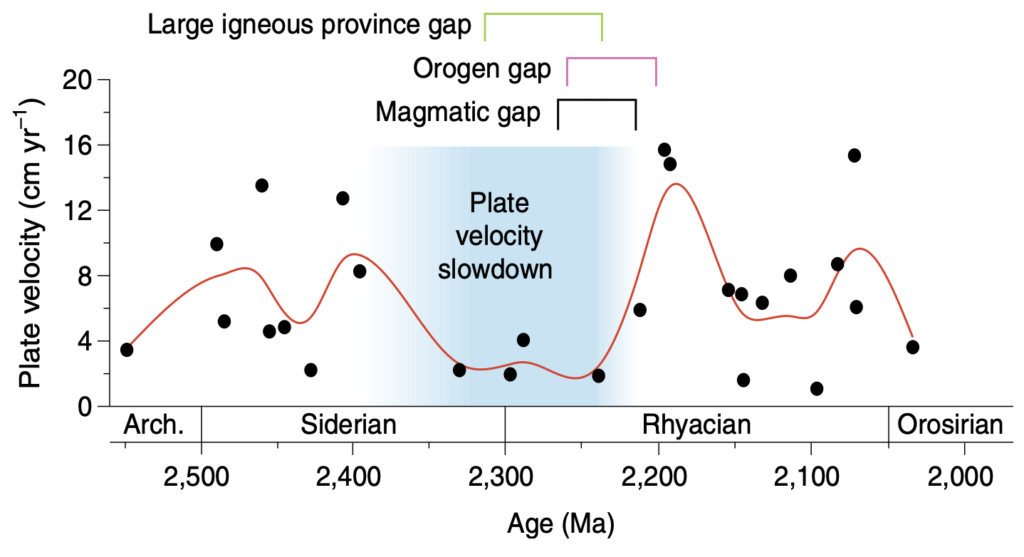Over the past 3-ish billion years, the temperature of the mantle has decreased by ~200 ºC. It is hypothesized this drop in ambient mantle temperature would have influenced the way in which heat is transferred through the lithosphere and thus would influence tectonic and magmatic processes (Herzberg et al., 2010).
The Archean geologic record is characterized by large volumes of trondhjemite, tonalite, and granodiorite (TTG) belts, a feature that is nearly absent from the post-Archean geologic record. Komatiites, the highest temperature lavas on Earth also show a dramatic drop in frequency across the Archean–Proterozoic boundary (Isley and Abbott, 1999).
In addition to changes in mantle temperatures and magmatism, the Archean–Proterozoic transition was also accompanied with the emergence of the continental crust above sea-level (Kump and Barley, 2007; Bindeman et al., 2018), a lull in global continental magmatism, and tectonic plate velocity slowdown (Spencer et al., 2019).

Using sediment samples from drill core and sedimentary-derived granites from around the world, our current research is focused on refining the timing of continental emergence with other geodynamic processes and evaluating the potential link between enhanced subaerial erosion, associated nutrient flux into the oceans, and potential radiation of the biosphere leading to the oxygenation of the atmosphere.
Related publications
Spencer, C. J., Murphy, J. B., Kirkland, C. L., Liu, Y., & Mitchell, R. N. (2018). A Palaeoproterozoic tectono-magmatic lull as a potential trigger for the supercontinent cycle. Nature Geoscience, 11(2), 97–101.
Spencer, C. J., Partin, C. A., Kirkland, C. L., Raub, T. D., Liebmann, J., & Stern, R. A. (2019). Paleoproterozoic increase in zircon δ18O driven by rapid emergence of continental crust. Geochimica et Cosmochimica Acta, 257, 16–25.
Bucholz, C. E., & Spencer, C. J. (2019). Strongly Peraluminous Granites across the Archean-Proterozoic Transition. Journal of Petrology, 60(7), 1299–1348.